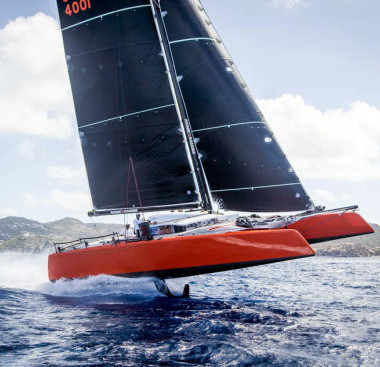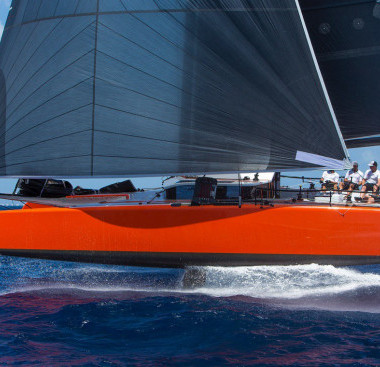The Trickle Down Effect
I’ve had an interest in hydrofoil sailboats ever since I ever heard about them, when I found ‘The 40-Knot Sailboat’ by Bernard Smith in the Kirkland Public Library as a teenager, which I must have checked out a dozen times. A few years later I was glancing through the Whole Earth Catalog at the neighbors and I saw an entry for ‘Flying Hydrofoils’, published by the AYRS in 1970, which I promptly ordered. So it has been with considerable delight to finally witness the advent of flying sailing hydrofoils into popular sailing.
Sailors talk about the “trickle down effect” from the America’s Cup, and how the AC72 foiling cats opened the door to popular foiling in the same way that military spending on weapons eventually trickles down to useful inventions. This is not exactly true, we’ve had foiling Moths since 2001, the Hobie Trifoiler and dozens of experimental boat before that. The AC72’s were more the result of the trickle up effect of many, many foiling enthusiasts over the years, often working alone and with few resources - showing the potential - if not the realization. The AC72’s were the realization.
Now we have the Gunboat G4, the first flying hydrofoil “cruising” cat undergoing sea trials in St. Martin. Yes, it has taken millions of $, truckloads of carbon fiber and terabits of computing, but it IS happening. Eventually we’ll see people figure out how to get foiling on less than millionaire budgets, and finally we’ll even have plywood/epoxy homebuilt foiling cruisers.
Perhaps they will be much like David Keiper’s WILLIWAW, the first successful flying hydrofoil cruising yacht, designed and built in 1968 with a small amount of $, and without the benefit of any carbon fiber or computers at all.




Wow! A few days later the G4 capsizes. To me this looks like your typical powered up cat that didn’t bear off or release the sheets in time.
https://vimeo.com/125378004